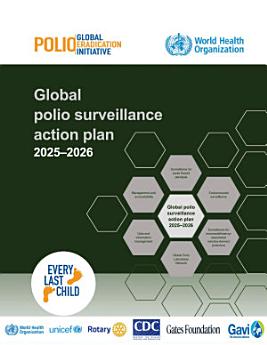Global Polio Surveillance Action Plan 2025-2026
World Health Organization
Jul 2025 · World Health Organization
Ebook
93
Pages
family_home
Eligible
info
reportRatings and reviews aren’t verified Learn More
About this ebook
The Global Polio Surveillance Action Plan 2025–2026 defines the surveillance activities required to achieve the goals of the Global Polio Eradication Initiative (GPEI) for the interruption of wild poliovirus type 1 (WPV1) transmission and outbreaks of circulating vaccine-derived poliovirus type 2 (cVDPV2). The Global Polio Surveillance Action Plan (GPSAP) brings together the five surveillance work streams that collectively function to help guide the polio eradication effort, namely: 1) syndromic surveillance for cases of acute flaccid paralysis (AFP) in children aged under 15 years, referred to as AFP surveillance; 2) surveillance for poliovirus in sewage and wastewater, referred to as environmental surveillance; 3) surveillance for immunodeficiency-associated vaccine-derived poliovirus in patients with primary immunodeficiency disorders, referred to as iVDPV surveillance; 4) laboratory testing to provide confirmation and genetic sequencing of polioviruses, provided by the Global Polio Laboratory Network; and 5) data and information management that support reporting detections and monitoring poliovirus surveillance via a centralized repository, referred to as the Polio Information System or POLIS. Lessons learned from the earlier Global Polio Surveillance Action Plan 2022–2024 inform changes in the new action plan. This GPSAP also continues to align with and support polio surveillance objectives and activities detailed in the GPEI Polio Eradication Strategy.
Rate this ebook
Tell us what you think.
Reading information
Smartphones and tablets
Install the Google Play Books app for Android and iPad/iPhone. It syncs automatically with your account and allows you to read online or offline wherever you are.
Laptops and computers
You can listen to audiobooks purchased on Google Play using your computer's web browser.
eReaders and other devices
To read on e-ink devices like Kobo eReaders, you'll need to download a file and transfer it to your device. Follow the detailed Help Center instructions to transfer the files to supported eReaders.








